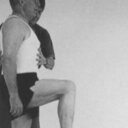Hepatoprotective effects of Rubus aleaefolius Poir. and identification of its active constituents.
Palavras-chave
Resumo
The purpose of this study was to study the hepatoprotective effects of the most promising extract of the root from Rubus aleaefolius Poir. and to isolate and identify the active components. Various crude forms of Rubus aleaefolius have been evaluated for their effects on CCl(4)-induced acute liver injury in mice vivo experimental model. Treatment groups contained 5 sub-groups that were ethanol crude extract; the high/low dosage ethyl acetate or n-butanol fraction; extracted with ethyl acetate or n-butanol after the residues and major constituent; intragastrically administrated with 35 mg/kg; 35, 4.6 mg/kg; 35, 5.8 mg/kg; 35 mg/kg and 3.5 mg/kg for 7 days. The serum samples were collected for biological analysis and also carried out histopathological studies. The low-dosage ethyl acetate fraction was the most active when the fractions were compared. It was found to decrease AST, ALT; to prevent formation of hepatic MDA, NO and intensify the activity of SOD. The histopathological changes induced by CCl(4) were also significantly reduced. The separation revealed the presence of six constituents by a bioassay-guided fractionation, beta-Sitosterol (1), 1beta-Hydroxyeuscaphic acid (2), Oleanolic acid (3), Myrianthic acid (4), Euscaphic acid (5), and Tomentic acid (6). Among them, compounds 2, 4, 5 in Rubus aleaefolius root is reported here for the first time. 1beta-Hydroxyeuscaphic acid (major constituent) showed a tremendous activity and the results confirm the traditional uses of Rubus aleaefolius in treating hepatitis.


